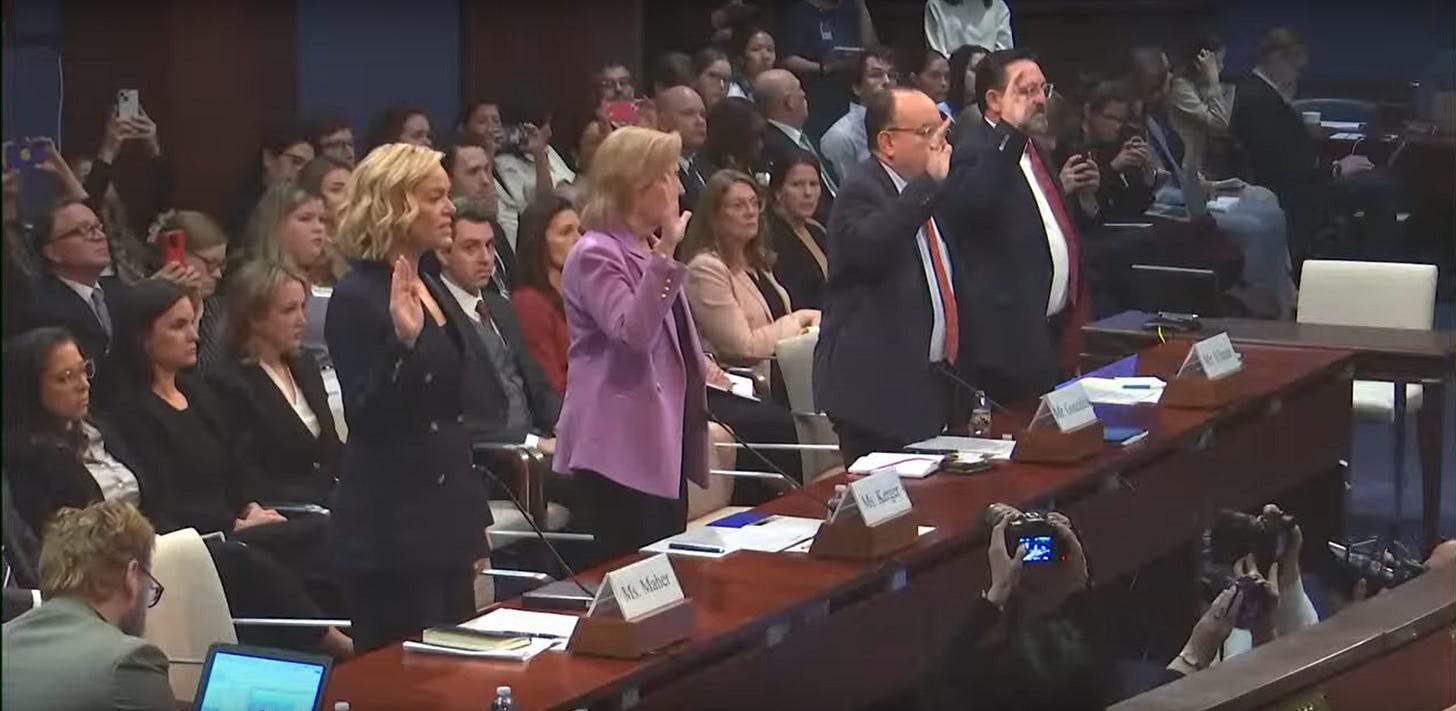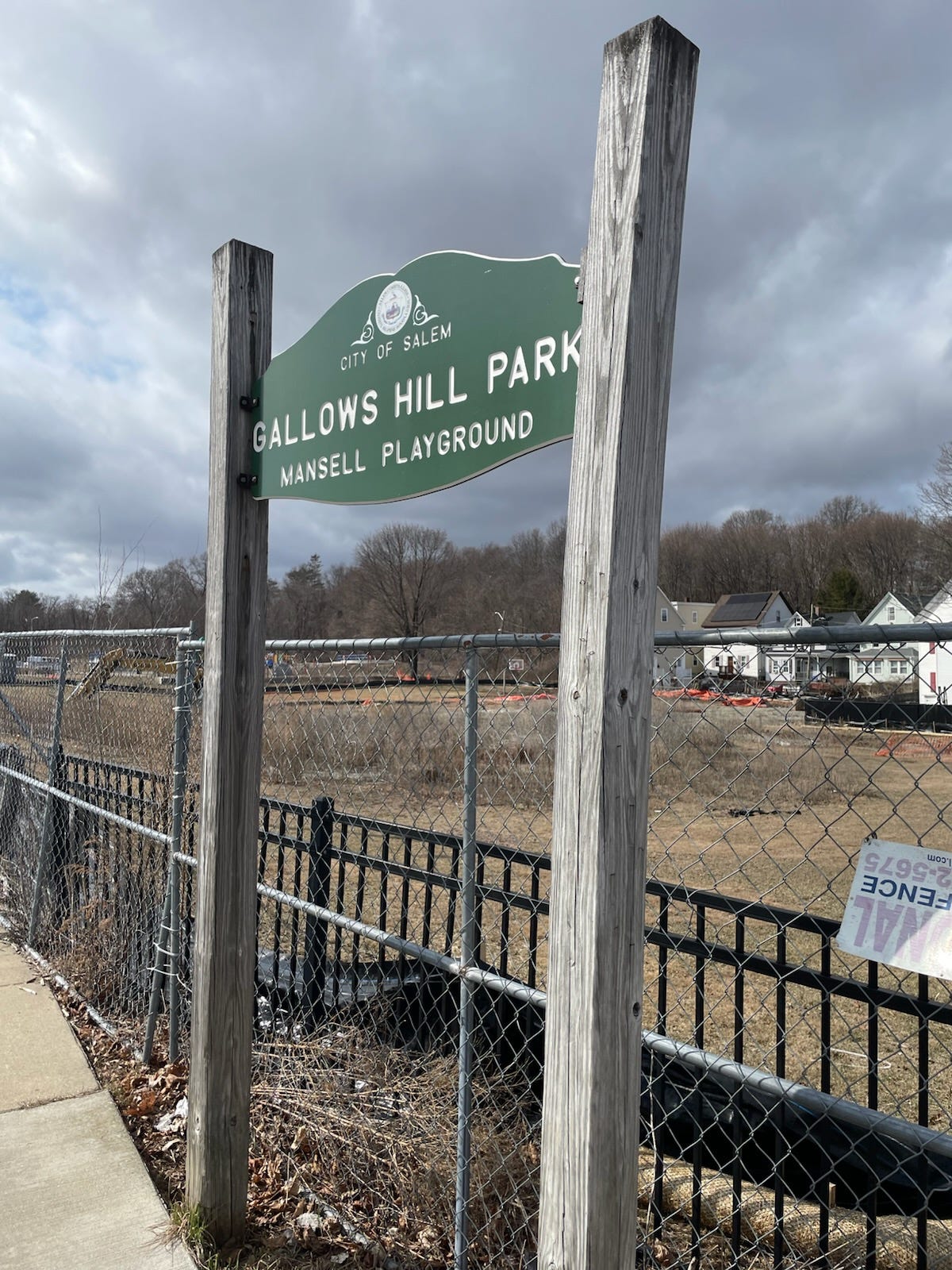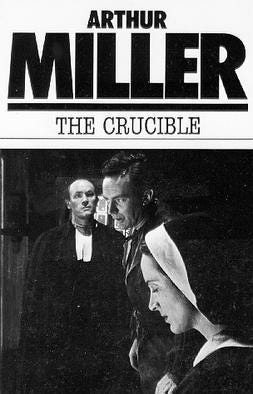What the Salem Witch Trials can teach us about the Trump era
How would Arthur Miller view this week’s congressional hearings on PBS and NPR?

SALEM - It still gets dark early here and the long shadows of the late afternoon fall quickly across the New England clapboard homes, the red-brick town hall and stone churches that date back to the time of the Salem Witch Trials of 1692. A cold, damp wind blows off the harbor this time of year.
I was in Salem to give a speech earlier this month and walked the quaint, historic village popular with tourists who come to see the museums, and then drove up a winding road with suburban homes clad with vinyl siding and past a more industrial area tucked behind a Walgreens Pharmacy. It was there in 1692 the Puritan community set up the gallows after the trial which was based on false, or so-called “spectral evidence” in which witnesses relied on the supernatural to condemn their neighbors.
Just behind the banality of Walgreens is Gallows Hill and then Proctor’s Ledge which marks the precise spot where 19 innocent people were hanged in 1692. The celebrated writer Arthur Miller used this haunted setting to write his 1953 play The Crucible, which served as an allegory for McCarthyism, a time in 1950s America when the federal government persecuted anyone accused of being a communist. Miller, who was himself brought before the House Un-American Activities Committee, or HUAC, led by Sen. Joseph McCarthy, a Republican from Wisconsin. Arthur Miller was convicted of contempt of Congress in the darkest days of McCarthy’s committee spearheaded by a young Congressman named Richard Nixon and McCarthy’s loyal henchman and chief counsel, Roy Cohn.
Salem is once again a fertile place to understand history and to reflect on the events of our time. It is not just an accident of history that Roy Cohn emerged years later and shaped a young real estate tycoon named Donald Trump, setting him on a path to becoming a public figure, with the conviction that he would be president some day. In the end, Trump betrayed his friend Cohn, as he was dying of AIDS, but Cohn’s vision would come to fruition posthumously which brings us to where we are today.
Those years after McCarthy was finally toppled and the tyranny was lanced and the poison drained, America turned to a new era filled with the idealism of President John F. Kennedy and the dreams of the New Frontier. After Kennedy’s assassination and the ushering in of President Lyndon Baines Johnson, LBJ would seize the extraordinary moment in American history to build out the architecture around Kennedy’s hopes and establish what became known as the Great Society. This vision forged many of the most ambitious federal programs that are now under assault as never before.

The Trump administration and their allies in Congress are now on an all-out offensive to wipe out LBJ’s legacy and to do so they seem to be divining the ghosts of McCarthy and Cohn, mixed with their own modern brand of spectral evidence to point their finger at anyone who dares to oppose them. We’ve seen them single out judges, government agencies and even students. But this week the harsh spotlight of Trump and his acolytes was turned on the Corporation for Public Broadcasting, founded in 1967.
It’s worth noting that Representative Marjorie Taylor Greene, the Georgia Republican who organized the hearings focused on PBS and NPR, framed the proceedings under the title: “Anti-American Airwaves.” That sounds an awful lot like the “Un-American Activities Committee” doesn’t it? She opened her remarks by lacing into PBS and NPR, which receive roughly half a billion dollars in public money through the CPB, as “radical left-wing echo chambers” that publish news programs that skew left and that she believes indoctrinate children with LGBTQ programming. Greene made clear that she and other Republican leaders were coming to slaughter the sacred cow of the liberal establishment and a safeguard for our democracy, public media.
“We believe that you all can hate us on your own dime,” said Greene.
The leaders of both PBS and NPR offered testimony that the claims of liberal bias were false and that both networks were in fact a crucial source of trusted, accurate information and educational programming for millions of American families. They emphasized how the network of local stations for PBS and NPR are a lifeblood of community journalism at a time when local news, particularly local newspapers, are in a stunning decline with news deserts growing across America at an alarming rate. PBS created epic family programming from This Old House to NOVA and beloved children’s programming from Sesame Street to Curious George. Today, it is fair to say that both PBS and NPR do some of the best national and international reporting in the country through their flagship brands such as PBS FRONTLINE and NPR’s All Things Considered.
It was hard not to see the hearings as the latest salvo in the Trump administration’s campaign against journalism. It is far more organized in its approach than the rhetorical ire of Trump’s first term where he derided journalists as “The Enemy of the People,” a phrase that echoes Germany’s past and was used in Nazi propaganda.
Now Trump’s counter punching is not only about rhetoric but more of a concerted pummeling of major institutions of journalism such as the Associated Press (AP), barring its reporters from the White House press pool, and dismantling the federal agency that oversees the Voice of America, an important source of news in many corners of the world.
The battle of the far-right in America against journalism, and specifically against public broadcasting is now new. Even the legendary Fred Rogers, the star of “Mister Rogers’ Neighborhood” squared off against the Nixon administration in 1969 to protect PBS from proposed cuts.
But at the Wednesday hearing led by Greene it was clear the battle has become an all out war. NPR’s president Katherine Maher, defended the radio network’s journalism as “non-partisan and fact-based.” But she was confronted about social media posts she had written before she became the head of NPR which labeled Trump a “racist” and a “sociopath.” Maher said she regretted the posts and would not have written them today.
There were also assertions from Greene and others that PBS and NPR underplayed a story from the 2020 campaign about the contents of Hunter Biden’s laptop. Maher, who was not running NPR at the time, said, “Our current editorial leadership thinks that was a mistake, and so do I.”
Republicans on the committee also referenced Uri Berliner, a former NPR business editor, who argued convincingly that NPR had become infused with a liberal bias in an essay which was published by The Free Press. Progressive points of view are pronounced in many corners of NPR and PBS and there is definitely room for reflection within those news organizations about standards of fairness in a deeply polarized time. The need to look in the mirror and acknowledge double standards and transparency is something I pointed out in a personal column I wrote for Columbia Journalism Review this week.
So, yes, there can at times be double-standards and implicit bias, but none of that should overshadow the extraordinary contribution that is made every day by the PBS NewsHour, by NPR’s international reporting, by the impactful documentaries of FRONTLINE and so many local radio and television stations that provide thoughtful and enlightening coverage every day in their communities.
This new assault by the far-right seems aimed not only at the journalism of PBS and NPR but at truth itself. Their ammunition is a new form of weaponizing doubt, all of which are actions that seem to come straight out of “The Authoritarians’ Playbook,” which was the title of a special report we did at GroundTruth in 2019 that feels prescient and worth revisiting in these dark days.
The historical context matters in understanding the return of authoritarianism, and it also matters in understanding how the witch trials got started and why they offered a perfect allegory for McCarthyism and may also offer a way to understand the Trump era. In the opening narration of The Crucible, the audience learns about Puritan colonists in the Province of Massachusetts Bay, which the narrator depicts as an isolated theocracy in constant conflict with Native Americans and it features several key characters who are slaves. In 17th Century Salem, it was people of color who were the first to be accused of human trafficking with the devil.
The narrator articulates how the lack of civil liberties, isolation from civilization, and lack of stability in the Bay colony caused internal tensions which would contribute to the events depicted in the play. I can’t help but think that Miller would be hiding out in Salem today, as he did in the early 50s, trying to soak in the powerful allegory that lies there in understanding the witch hunts that are underway today.
So whatever happened to the late Arthur Miller and how was McCarthyism finally put out of business? And perhaps more importantly, what can we learn from that moment of history to apply in our current situation? Miller was eventually exonerated. And at the height of the injustice of McCarthyism, it was good old-fashioned journalism that began to expose the tyranny of McCarthy’s hearings. The lies were exposed as was the thuggery of the over-reach of the FBI and the shadowy operations of Cohn and others in dragging journalists, thought leaders, artists and Hollywood actors and directors over the coals of the Red Scare.
It took the moral courage and solid journalism by the legendary Edward R. Murrow to reveal for America who McCarthy really was and what was behind this movement. He did so through his reports on CBS News’ primetime See It Now program. The story of Murrow and his team reporting on McCarthy is told in the Hollywood movie Good Night and Good Luck starring George Clooney and is worth getting on Netflix to understand what is needed today to counter the shadowy peril of the era in which we find ourselves. And while you are at it, watch the 1996 Hollywood interpretation of The Crucible starring Daniel Day-Lewis.
There are key differences between the media during the time of Murrow and now, and one of them is the financial struggles of leading journalism organizations who have seen advertising revenue that always drove healthy newsrooms disappear with Facebook and Google taking an estimated two-thirds of all digital ads. The failing business models have been exacerbated by algorithms that cause polarization and by disinformation and misinformation campaigns that increasingly seek to discredit journalism's findings. If Murrow were alive and on the air now, he would have a much harder time, and a smaller segment of the audience, to expose the lies. It is fair to ask whether Murrow could find signal amid all the noise of today’s media landscape.
To understand this moment, we need to understand our history and we need to contemplate the power of great journalism as a guardrail protecting our democratic institutions if we are going to survive the peril that surrounds us and sustain our democracy.






Not a histrionic choice of title at all
Tattoo me schadenfreude